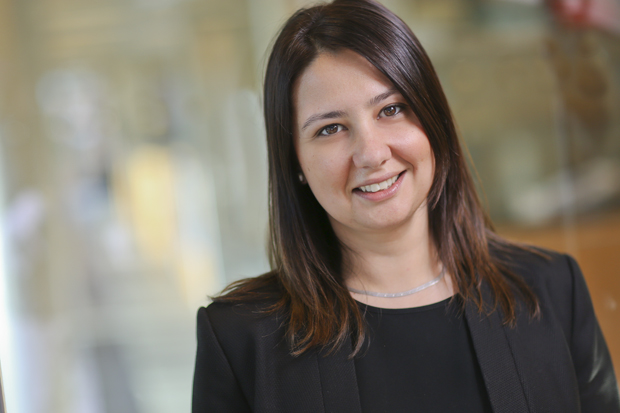Meet our new faculty member: Assistant Professor of Fine Arts Muna Guvenc
 Photo/Mike Lovett
Photo/Mike LovettMuna Guvenc
As part of our series profiling new professors, Muna Guvenc of the Department of Fine Arts talked with BrandeisNOW about her field and research. Guvenc joined the Brandeis faculty in the fall of 2017.
How did you become interested in your field/research area?
I was initially an architectural designer. After I graduated from the school of architecture at Istanbul University, I began my career at one of the largest architecture firms in Istanbul. Our office participated in multiple international architectural design competitions each year. In April 2003, when I was designing an opera house for a Norwegian architectural design competition, the invasion of Iraq started. As my team worked on the design we were listening to the news on the background. The podcast we were listening to was taken up with details of how the cities were destroyed by rampant bulldozing and military attacks. As an architect, I think I was deeply touched by what I heard on the destruction of ancient sites and traditional settlements of Mesopotamia. That was the crucial moment when I decided to pursue my Ph.D. to study and explore the many relationships between justice, war, and architecture.
What was your favorite course as a college student?
Architectural Design Studios. I had great studio critics during my time as an undergrad with whom I developed my creativity skills dramatically.
What has been your proudest career moment so far?
I think the proudest career moment has been when I completed my ethnographic and archival fieldwork in Diyarbakır, Turkey. The city has been under pressure for years. In this sense, the conflict between two political parties complicated and greatly challenged my work on the ground. Nevertheless, those very challenges I encountered fueled my passion for my research and expanded the scopes of my approach to architectural and urban theory.
What specific question/project are you most excited to explore in your work at Brandeis, and why?
At Brandeis, I am very excited in strengthening the architectural studies minor, most suited to the overall goals of the Fine Arts Department. As for my own research projects, one of the major questions that stimulates my scholarship is how contemporary architecture and urbanism participate in or respond to social justice and inequality. In this sense, my first book focuses on how built environment has mediated the production of Kurdish identity as members of an ethnic minority and the development of Kurdish cities in contemporary Turkey. Looking further ahead, I am planning to explore contemporary appropriations of prisons into cultural and pedagogical institutions in the global South. My goal is to reveal the involvement of architecture to the commemorative and identity politics of urban life.
What book would you recommend to introduce others to your field?
Spiro Kostof’s “A History of Architecture: Settings and Rituals” is a great book to begin thinking about very relationship between architecture and sociology, and politics.
What's your favorite book/movie/television/radio program/podcast or hobby unrelated to your field, and why?
I don’t have a favorite movie or show. But the soundtracks are important for me. Because I think the soundtrack of a movie adds another crucial dimension to a film and, perhaps unconsciously, it greatly influences my preferences. Abel Korzeniowski and Philip Glass are my favorite composers. I enjoy hearing their compositions for film.
What has surprised you about Brandeis since you came to campus?
American universities had frequently adopted an architectural style which came to be known as Collegiate Gothic. Brandeis’ campus architecture reflects the very historical period when the university was founded. Brandeis’ buildings represent significant examples of modern and contemporary architecture which I think help to express the university’s values and its academic priorities. Campus architecture also offers diverse showcases for my architectural history classes in which my students get a chance to observe the modern structures and building technologies closely.
What advice do you have for students who are interested in your field?
Travel abroad and explore new built environments and settlements different from your own. Most importantly, be very open to diversity, regardless of whether you choose to be an architect or an historian. At this age of intense inequality and separation, one of the important aspects of architecture is to creatively blend understandings of different backgrounds, experiences, and perspectives.
Categories: Arts, Humanities and Social Sciences





